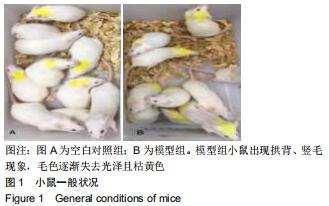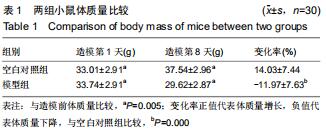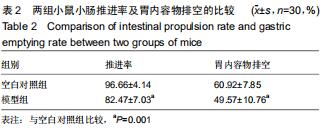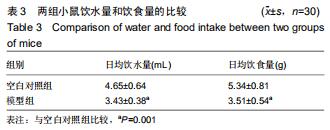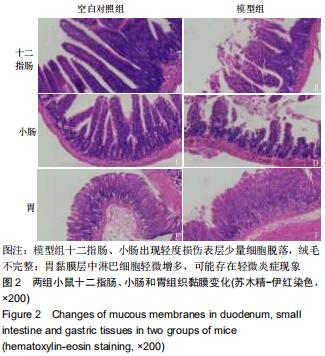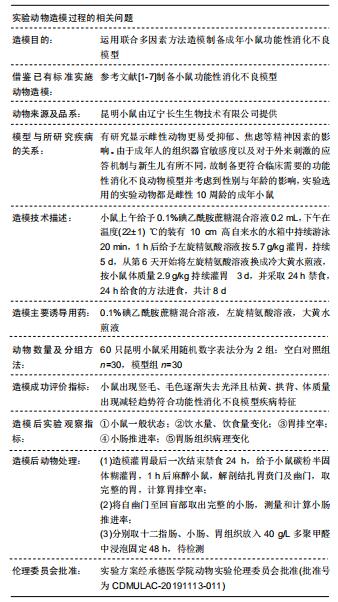中国组织工程研究 ›› 2020, Vol. 24 ›› Issue (32): 5158-5161.doi: 10.3969/j.issn.2095-4344.2805
• 组织构建实验造模 experimental modeling in tissue construction • 上一篇 下一篇
功能性消化不良成年小鼠模型的制备方法
于 静,庞佳昱,贾子晔,吴晓光
- 承德医学院基础医学研究所,河北省承德市 067000
Preparing an adult mouse model of functional dyspepsia
Yu Jing, Pang Jiayu, Jia Ziye, Wu Xiaoguang
- Institute of Basic Medicine, Chengde Medical College, Chengde 067000, Hebei Province, China
摘要:

文题释义:
间日给食:是指连续两次给食时间间隔24 h,使得实验鼠不能正常饮食,是一种在实验过程中喂养方面影响的处理措施,是消化不良实验动物模型制备的常见饲养方法。
功能性消化不良(Functional dyspepsia,FD):是指具有上腹部疼痛、胀痛、以及饱腹感、嗳气、食欲不振、恶心、呕吐等多种不适症状,经检查排除引起上述症状的器质性疾病的一组临床综合征。症状可持续或反复发作,频率为过去6个月中,症状发生3个月以上,是临床上最常见的一种功能性胃肠病。
背景:制备适宜的功能性消化不良小鼠模型能够为后续临床治疗和用药研究提供可靠的动物模型。
目的:运用联合多因素方法造模制备成年小鼠功能性消化不良模型。
方法:60只昆明小鼠随机分为空白对照组和模型组,每组30只。空白对照组小鼠每日灌胃2%蔗糖溶液0.2 mL,持续8 d。模型组在经典碘乙酰胺造模方法联合间日给食的基础上,放入水箱中持续游泳20 min,1 h后给予左旋精氨酸溶液5.7 g/kg灌胃,持续5 d,从第6天开始给予冷大黄水煎液2.9 g/kg灌胃3 d。观察小鼠行为学变化及光镜下病理形态学变化来确定成模效果。实验方案经承德医学院动物实验伦理委员会批准(批准号为CDMULAC-20191113-011)。
结果与结论:与对照组相比,模型组小鼠出现了毛发不光、拱背、体质量呈现下降趋势等特征变化,小肠推进率与胃内容物排空率均有下降现象,光镜下观察胃组织、肠组织切片显示有轻度损伤现象;提示在成年小鼠中运用联合多因素造模方法能够成功制备功能性消化不良模型,并且此种方法所制备的动物模型小鼠没有明显坏死、糜烂等器质性病变,说明此种制备成年功能性消化不良小鼠模型的方法可行。
ORCID: 0000-0002-4513-9343(于静)
中国组织工程研究杂志出版内容重点:组织构建;骨细胞;软骨细胞;细胞培养;成纤维细胞;血管内皮细胞;骨质疏松;组织工程
中图分类号:
